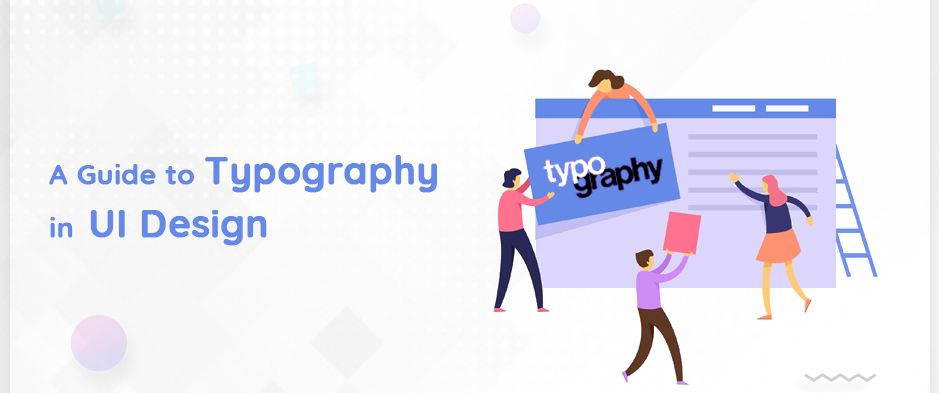One of the leading web design company recently stated that every element is important in the design when it comes to the design of the user interface and one of the best ways to improve the design of the user interface is typography. However, typography is considered to be the most difficult part of the user interface design.
Therefore, you must learn the basics of the science of typography to make an efficient user interface design. But still, some many webmasters and designers don’t know the ways to use typography correctly in the design of the user interface.
A good web design company not only reflect on readability, responsibility and graphic balance but also optimize typography for user interface design, and consider usability as the most crucial aspect. So to have a better understanding of the concept and its usability we have discussed typography below:
What is typography?
According to Wikipedia, it is a method and art of organizing the type to make written language attractive, readable and readable when it is displayed. The systematization of the type includes the choice of point sizes, typefaces, line spacing, line lengths, the spacing between letters and modification of the space between pairs of letters.
The term “Typography” also applies to the organization, style and appearance of the symbols, numbers and letters produced by the procedure.
Simply put, typography deals mostly with the language written on the screen and needs both the tactics and the artistic skills of a designer.
Best typography practices in user interface design
In case you want to create an excellent user interface design, you must master your typography. In this blog, a leading web design company will share some guidelines that will help you excel in the style of typography in the design of the user interface.
- Fully detectable letterforms
Numerous fonts have specific letter shapes that are not distinguishable from others in that set. This can make it difficult to read the text of that interface.
Along with the letters, the figures are sometimes ignored compared to the different attributes of the sources for a given task.
- Text styles
Use built-in text styles if possible, as they help you show the context in ways that are visually different while maintaining absolute readability.
These styles depend on the system fonts and help you take advantage of the benefits of basic typographic features, such as the dynamic type, which modifies the start and tracking of each font size automatically.
- Prototypes
Along with all kinds of designs, typography is also essential in prototype design. The incredible mobile typography can work together with each element of the user interface towards a productive and clean mobile user interface; However, in the design of mobile prototypes, the text does not need to be meaningful.
For example, in Mockplus, one of the best prototyping tools, you can use the text component to design with a simple drag and drop. Mockplus is made up of text elements of one or more lines. You can describe the properties of the text, such as the font, font size, alignment, colour, etc.
Besides, the automatic text data fill function will save you a lot of time. Besides, you can examine the design on a real mobile device to see if it has surprising readability.
- Size is important
It is generally seen that numerous designers include text components that differ in size; for example, copy of buttons, field labels, section headings, etc.
In general, some fonts are ideal for large sizes, while others look perfect when used in small sizes or for letter shapes. In this way, you will have to reflect on the scalability of the text in case you have a font that you need to apply to large headlines and small labels. If you choose a font that appears in a specific way, consider one that is compatible with different sizes and those that promote readability and usability.
- Letter spacing
The only thing you should consider is the space between letters is that you should make the space appropriate and smaller for the text size if the text is larger.
When you match large letters with large spaces, the font seems very open and this helps you correct the space manually. This manual configuration of the space between letters applies to the headings only in the design of the user interface.
- Large proportion
The width of a character in association with its height is explained as the proportion. Usually, you need a wide print and not a condensed one for better letter detection and this happens due to the best readability.
- Readability
This refers to the quality of the entire reading experience and is described as the ease with which you can identify blocks of text, subtitles, paragraphs, headings and understand the text presented to you.
You can consider it as a macro typeface that makes the text attractive to encourage website visitors to read the content.
- Sans Serif vs. Serif
According to the story, serifs are more readable. They were used in print for an extended period and greatly improve the reading experience for large blocks of text. However, this story is not the same on the mobile and the web. Different sans-serifs can be read and present the state of visual design as simple forms of letters. On the web and specifically on mobile devices, you can see more sans-serif.
Besides, the screen is not paper and, in general, will not read long texts on the web, especially in applications. In this way, everything depends on the project you are dealing with and how users will use your content.
- Hierarchy
The reading pattern is decided by hierarchy. Indicates how to keep a separate heading of body text and subtitle. This can be done with the use of contrast effect, margins, text sizes, fill, etc. You must learn this method correctly to master surprising readability.
- Scenarios insight
When you are about to finish the text that you will include in your user interface design, you should verify several scenarios. You should also understand how to combine and mould the text. An alert message is an example of this.
The original text needs to be different from the text of the alert message, and this brings to light the meaning that a good user interface is one that meets challenges but is perfect in the end.
In conclusion
Regardless of the purpose, the type will always lead the user interface. Your text will be mastered if you configure it correctly, and it will fail if you configure it incorrectly. All UI design practices apply to your selected typeface.
A leading web design company has stated that a realized user interface design comes with excellent typography. In this way, a text with a high score in flexibility and scalability can govern the race of the fluid encounter with its design.
Follow the above-mentioned tips or hire an expert web design company in case you are willing to establish yourself in the market and stay ahead in the competition.
To comment on this article and to know more about web designing and web development, please check: Moz Web Development
Source: Mind Inventory






